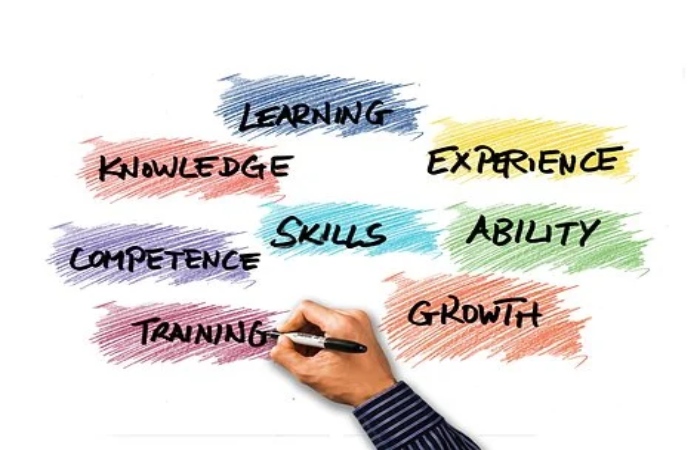Everything Passes; only the Experience Remains: Learn About Experience Marketing We all remember the first kiss, that graduation day or that unforgettable birthday; indeed, we all remember those unique moments because they generated an experience.
Many of those experiences we remember are not necessarily positive; maybe we also remember the day our team lost that final or our hearts were broken. But that is what life is about, living both positive and negative experiences.
Table of Contents
Like life, Brands also Seek to Generate Experiences
The brands we follow and consume seek to develop a positive experience in our lives. With the arrival of the digital world and the immediacy of content, plus the constant changes in communications, brands seek to get closer to their consumers in the right way, and they do it by all possible means.
Not only is consumer satisfaction sought, but now the connection is sought through experiences because these are generators of emotions responsible for decision-making. Today we know that brands that are not digitized will be irrelevant; we can also ensure that brands that cannot generate positive experiences with their audiences will lose ground to competitors.

What is Experiential Marketing?
Experiential marketing, also known as emotion marketing, is marketing created to evoke feelings. The product or service sold goes beyond what it is and is worth more for what it represents.
It is no longer a car, and now it is freedom. It’s not just flowers either, and now it’s love. And it’s not a trip, and now it’s a dream. And so, the products are now feelings and desires.
Experience marketing brings together everything that can evoke a feeling and cause us pleasure. It can be through sounds, smells, images, memories, or anything that gives us a positive sense.
Consumption is based on internal feelings, and we buy more than we need. But why is this? Because marketing creates those needs.
Let’s imagine a situation.
Claudia is at home looking at her phone calmly; suddenly, the image of an advertisement for some cute shoes on sale appears that says they are super comfortable and that they go perfectly with that blouse that she just bought. What does Claudia think? That she now “needs” those shoes.
Until then, did Claudia need shoes? Nope! And what happened? Marketing generates the desire to consume and if the image of an advertisement was capable of generating that desire, imagine what experiential marketing can do.
Traditional Marketing to Experiential Marketing
To better clarify the concept of ” Experiential Marketing “or “marketing of experiences or emotions”, we must go back to the moment when marketing was only one way.
Because traditional marketing sought the purchase of a product, a use and a repurchase, focusing on its quality, its differential characteristics and its tangible benefits, hence the need to extend the concept of traditional marketing to experience marketing, which is It focuses on the customer himself and the experiences that he obtains during the commercialization and use of the product or service
The key to Experiential Marketing
v The key is for the customer to choose a product from the category for what it offers before purchase, during use, and generates after use.
The Harley-Davinson brand provides an example of this. Undoubtedly the desired brand in the motorcycle segment, which, beyond selling at a low price or the idea of a motorcycle that offers more incredible speed (product characteristics that would be sold from the point of view of old-style marketing), it becomes an experience thanks to the fact that what it sells is a lifestyle, it generates desire and longing before buying it, it is enjoyed during its use, and it leaves excellent experiences after its use; in addition to becoming memorable stories and experiences.
Another clear example of the excellent use of “experience marketing” is done by the well-known brand of red and white soft drinks, I don’t have to say its name and I’m sure you already know what it is, because apart from doing a great job in generating Experience, it also it does so from its corporate image. They stopped selling soft drinks to sell happiness, a territory with many paths to explore and all of which they travel to reach their audiences with experiences that genuinely generate happiness.
- happiness cashier
- friendship machine
I could use ten more examples of the same brand, but these two are enough to understand the concept; the most important thing is to find new options to get closer to your audience and generate different experiences.
In a market saturated with brands, products and services, experiential marketing or emotional marketing plays an awareness role for those responsible for brands.
How do you Apply Experiential Marketing to Brands?
- Use the senses, generate experiences that awaken different sensations in your users, make them feel flavours, and smells, play with touch and make them look at new things, do it in your next campaign.
- Revenue advantage of the power of data, to segment and find powerful insights that allow you to get closer to the authentic tastes of your audiences. Find out what music they like to dance to, what flavours they can’t resist and what their favourite colour is; Those data you will find will be vital in generating a different experience.
- Facts alone speak louder than words, so let your product demonstrate its full potential in action; here lies the true power of the Experience.
- Do not always try to sell; create awareness spaces, that is, give your followers fun spaces, sports spaces, entertainment spaces, sponsor musical and sporting events, and give them an unforgettable experience. You will see that your products will sell themselves and generate word of mouth among your audience, which is worth more than any advertising investment.
When A Brand Gets Them To Follow It
Apple is a brand familiar worldwide for its status and comfort achieved by having stopped having customers and consumers gain followers. That’s right, the followers, without a doubt, connect emotionally with their people. They manage to attract thousands of people year after year, so that they wait for the new version of the mobile device, regardless of the water, the sun or the long lines. . That is what we define as brand loyalty. It is achieved by creating experiential marketing strategies.
People are Sceptical
People believe less and less in brands, and some are unaware of this. Hence, advertisers need to understand the power of generating experiences and look for alternative mechanisms and tools so that their brand or product arouses interest in people due to the knowledge it generates.
Examples of Experiential Marketing
To give you a better idea, now are two examples of experiential marketing.
Boys Meeting
An example of experiential marketing that appeals to nostalgia is the Argentine advertising for Quilmes beer.
This advertisement shows a meeting of children of all ages and from all places, where the most experienced try the Classic Quilmes Beer to verify if its taste is the same as before.
Taking the first drink, old scenes of typical situations and classical artists flash through his mind. After these images, with a satisfied expression, the boy shouts, agreeing with the quality of the beer.
As a musical background, classic of Argentine rock from the 80s complements the advertising.
Here they managed to perfectly reproduce a feeling of longing for the past that even those who are not Argentinean can feel it.
Christmas Eve of the Airline Spanair (flight JK5208)
Another excellent example of this type of marketing is the experience passengers had on a Spanair company flight.
It happened on Christmas Eve from Barcelona to Las Palmas, where they would arrive around midnight. Upon arrival at the final destination, the passengers went to get their bags. Instead of leaving the bags on the conveyor belt, boxes and gift packages of different sizes and shapes came out, each with the name of its recipient.
This type of Experience certainly leaves its mark, not only on the passengers on that flight but also on everyone who witnessed the situation.
After this detail, those passengers will hardly choose another company to make their flights.
Finally, remember that your brand must get people to act and react to your experiential marketing strategy; only then will you generate stories that contribute to your brand’s values and allow you to establish yourself at the “top of mind” why not? , at the “top of heart”

